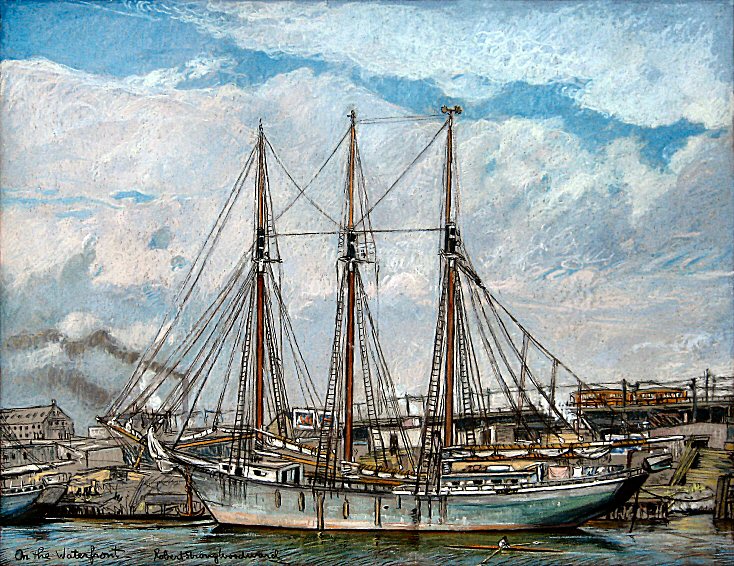Quick Reference
1927-'28
The Wharf, Boston, MA
Pastel on Board
Urban Landscape
Chalks & Crayons
22" x 29"
So. Vermont AA, 1928 / '31
J.H. Miller Galleries, 1928
Myles Standish Gallery, 1929
Stockbridge (MA) Art Exhibit, '31
Mt. Holyoke College, 1931
Amherst Coll. Jones Library, 1932
Hampshire Bookshop, 1933
Northfield Seminary, 1933
Williston Academy, 1933
Valleyhead Sanitarium, 1934
Syracuse (NY) MFA, 1934
Unknown
NA
Related Links
- See also the...
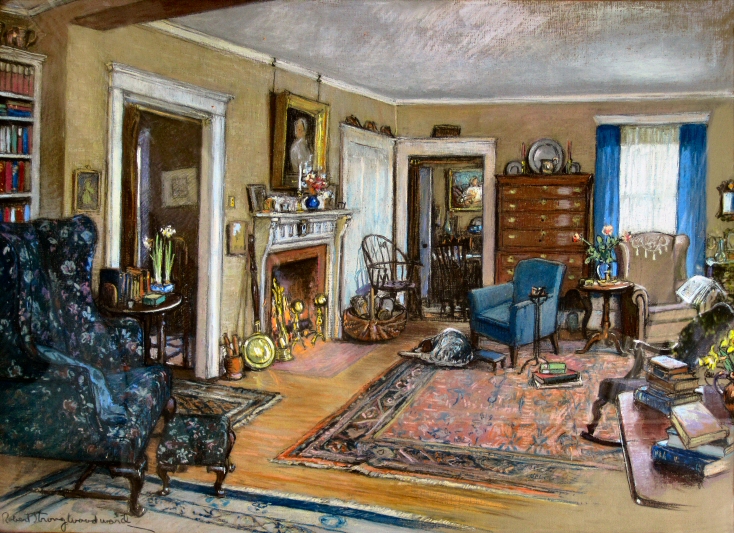 Chalks & Crayons Gallery to view other drawings
Chalks & Crayons Gallery to view other drawings
- See also the...
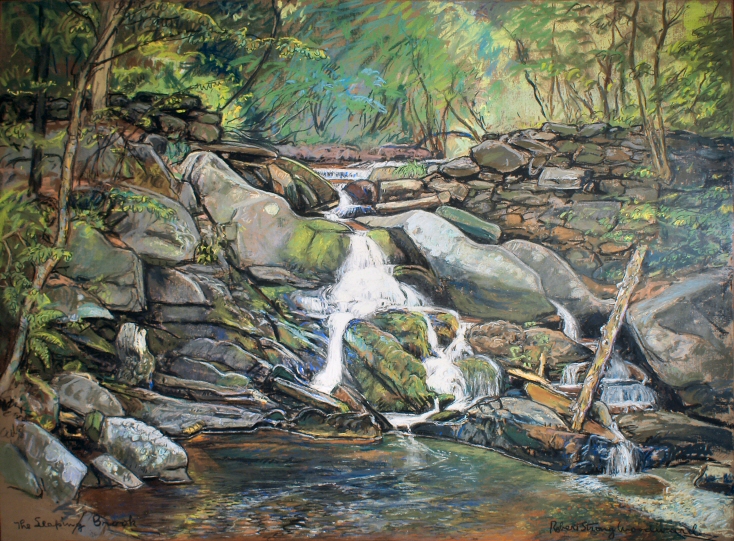 Brooks, Ponds, Rivers Gallery for related pieces.
Brooks, Ponds, Rivers Gallery for related pieces.
- See also the...
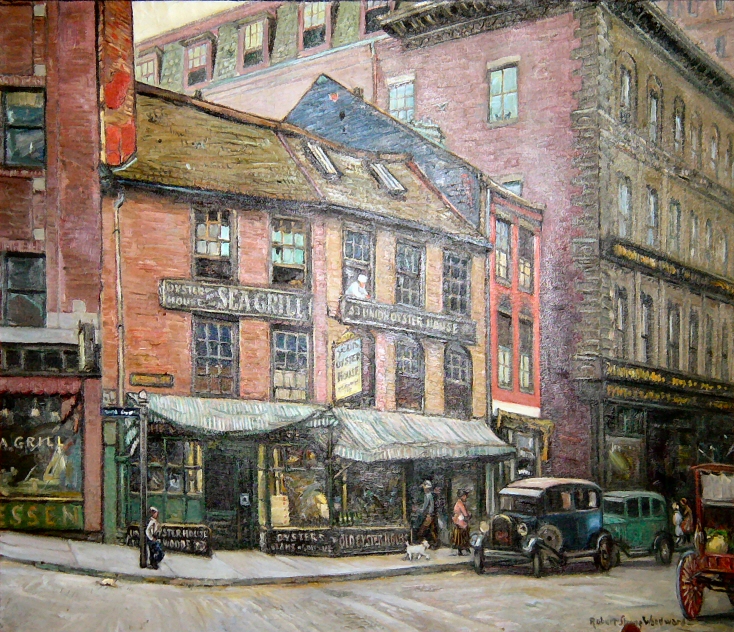 Boston Gallery to view related pieces.
Boston Gallery to view related pieces.
- See also the...
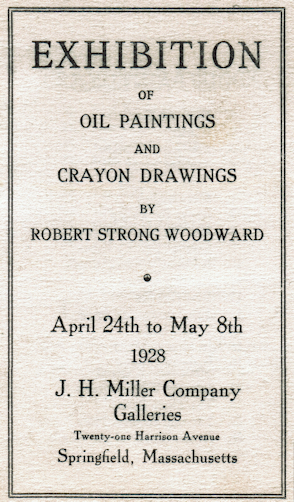 Exhibition List for a complete list
Exhibition List for a complete list
- See our page devoted to ...
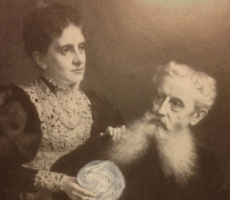 Museum Founder G. Walter V. Smith
Museum Founder G. Walter V. Smith
- See our page devoted to...
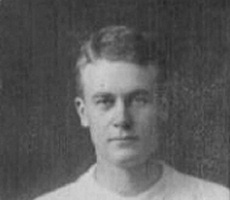 Dr. Lawrence Lunt
Dr. Lawrence Lunt
Featured Artwork:Drying Nets; T Wharf
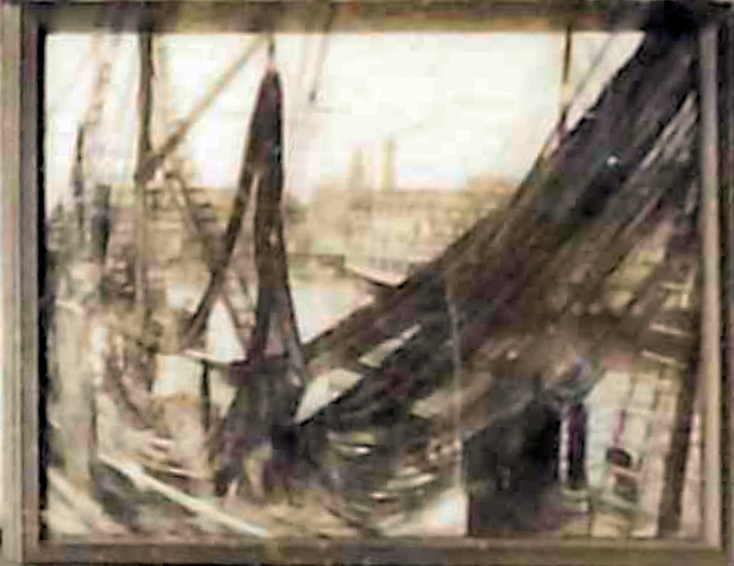
This is the only known image of this pastel painting taken from a photo of the 1931 Mt. Holyoke Coll. Exhibit
Click here for a high resolution image of the drawing
RSW's Diary Comments
 The artist did not keep records of his pastels he called chalk drawings.
The artist did not keep records of his pastels he called chalk drawings.
Editor's Note:
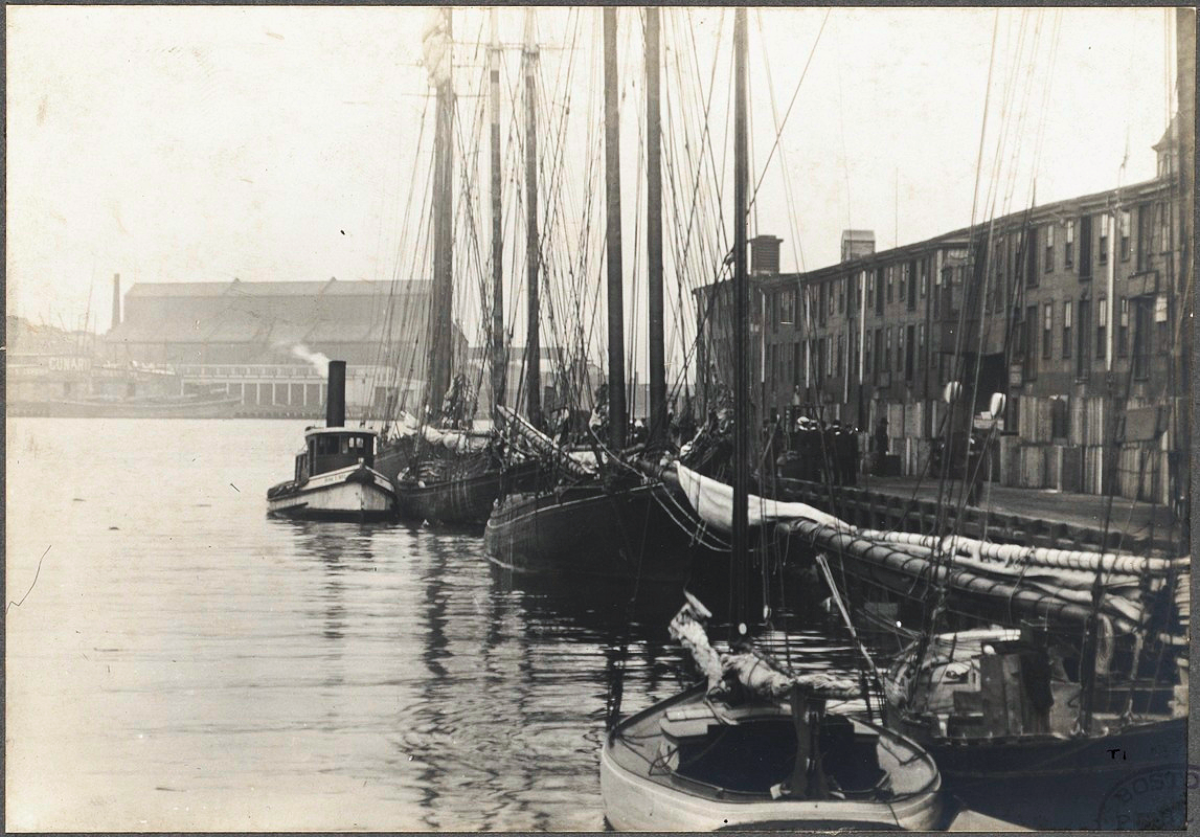
 An image of the T Wharf, 1920s. This photo is
An image of the T Wharf, 1920s. This photo is
pointing towards East Boston and Pier 3 near
Charlestown to the northeast. Picture Credit:
DigitalCommonwealth.org from the Boston Pub. Lib.
The name of this chalk drawing has been confusing for some time complicated by the fact the
there is damage to the exhibit program we have, and it is right after the "T" and before Wharf. The gap is enough for us
to question whether it is "The Wharf" or "T Wharf." Dr. Mark
listed its name as being "T Wharf," but since his passing in 2020 we are not able to ask him anymore questions about
these things.
But a simple search on Google reveals the answer to our question almost immediately. There
was a wharf called the "T Wharf" added to the end of North Boston's Long Wharf in the 19th Century and,
"It served as a center for fish trade in the 19th and early 20th centuries.' The Wharf no longer exist. It was
removed in the 1950s. [Source: NorthEndWaterfront.com]
We could not find a picture of this particular view but there are some other really interesting photographs from that time period. We believe the perspective here is from the end of the T wharf looking back towards Custom House Block on the Long Wharf. Here are other links for more information:
What is also worth noting here is that Woodward made this painting nearly three years before
On the Waterfront in 1930 when he swapped homes with
his cousin Florence for a month to paint specific
scenes of Boston as part the city's 300th birthday.
In On the Waterfront, you can see a pier
hogh above the moored ships and just beyond that pier is a brick building, possibly the Long Wharf?
Additional Notes
 We know this is a terrible picture. Yet, we feel obligated to publish it simply
for the record and identi-
We know this is a terrible picture. Yet, we feel obligated to publish it simply
for the record and identi-
fication purposes. The whereabout of this chalk drawing is currently but it is an important
painting.
It exhibited 11 TIMES, at several of Woodward's FAVORITE places. Even the Hampshire Bookstore is
significant.
It is believed that before Woodward's father Orion went into Real Estate Development and
sometime after he was a
telegraph operator, he owned a stationary store that the Hampshire Book-
store later became. We do not think that is a
coincidence. Nothing is everything but something is not
nothing. Where a painting exhibited is not everything, but it is something, especially
when you look at it
as a group... More:
 Valleyhead is
his closest friend and advocate Dr. Lawrence Lunt's sanitarium. It is the
place he started after leaving the Austin Riggs Institiute in Stockbridge.
Valleyhead is
his closest friend and advocate Dr. Lawrence Lunt's sanitarium. It is the
place he started after leaving the Austin Riggs Institiute in Stockbridge.
 His cousin, frequent excursion
company, poet and pioneering educator Flora White is connected to Williston.
His cousin, frequent excursion
company, poet and pioneering educator Flora White is connected to Williston.
 His relationship with the
Myles Standish Hotel and Gallery spans the entirety of its life as a hotel. He even held a farewell finale exhibition of all his
favorite paintings to close its doors before becoming a dormitory for Boston University.
His relationship with the
Myles Standish Hotel and Gallery spans the entirety of its life as a hotel. He even held a farewell finale exhibition of all his
favorite paintings to close its doors before becoming a dormitory for Boston University.
 J.H. Miller is the first gallery to give Woodward
his for one man show. His relationship with them goes back to 1921, whne the gallery bought a group of 6 to 8 paintings wholesale from the artist to sell. J.H.
Miller is also the gallery that acted as Woodward's representative when the director of the Springfield Museum,
George Walter Vincent Smith sought to purchase a painting for the museum's collection (one in 1921 and two in 1922). After Woodward's tragic 1922
Redgate fire, in an effort to regain back his reputation, J.H. Miller was the first established gallery to give a one-man show. Woodward had a previous one-man
showing in 1926, however, it was not held in a gallery but rather a private residence in Boston organized by supporters of the artist.
J.H. Miller is the first gallery to give Woodward
his for one man show. His relationship with them goes back to 1921, whne the gallery bought a group of 6 to 8 paintings wholesale from the artist to sell. J.H.
Miller is also the gallery that acted as Woodward's representative when the director of the Springfield Museum,
George Walter Vincent Smith sought to purchase a painting for the museum's collection (one in 1921 and two in 1922). After Woodward's tragic 1922
Redgate fire, in an effort to regain back his reputation, J.H. Miller was the first established gallery to give a one-man show. Woodward had a previous one-man
showing in 1926, however, it was not held in a gallery but rather a private residence in Boston organized by supporters of the artist.
 The 1931 Mount Holyoke College exhibition is the
LARGEST one-man show in his ENTIRE career. Fifty-two paintings in all; twenty-seven oil paintings and twenty-five chalk drawings; making it ALSO the most pastels
exhibited together at one show. It beats the pastel-only featured exhibition in 1929 at the Pynchon Gallery in Springfield by NINE paintings.
The 1931 Mount Holyoke College exhibition is the
LARGEST one-man show in his ENTIRE career. Fifty-two paintings in all; twenty-seven oil paintings and twenty-five chalk drawings; making it ALSO the most pastels
exhibited together at one show. It beats the pastel-only featured exhibition in 1929 at the Pynchon Gallery in Springfield by NINE paintings.
 While Woodward exhibited at Mt. Holyoke 9 times,
that is just one more than half the times he held a show at Amherst College. Woodward had 16 showsat Amherst over a 18 year period of time.
While Woodward exhibited at Mt. Holyoke 9 times,
that is just one more than half the times he held a show at Amherst College. Woodward had 16 showsat Amherst over a 18 year period of time.
 Many people do not know this but the Syracuse
Museum of Fine Art is cited as the first museum in the country devoted entirely to distinctly American art. It was founded by one of the founding members of the
Metropolitan Museum in New York City. The museum has been named the Everson Museum of Art. Along with this, its director, In Woodward's time, is Anna Olmsted.
Ms Olmsted also writes a syndicated column known as "Art Chat," and Olmsted sings Woodward's praises in a number of her columns. Also, besides Mount Holyoke
College, that owns two chalk drawings, the Syracuse MFA bought a chalk, Across the Pond. Only Syracuse,
Mt. Holyoke and, the Memorial Hall Museum, (Deerfield, MA), have chalk drawings in their collection that we are aware.
Many people do not know this but the Syracuse
Museum of Fine Art is cited as the first museum in the country devoted entirely to distinctly American art. It was founded by one of the founding members of the
Metropolitan Museum in New York City. The museum has been named the Everson Museum of Art. Along with this, its director, In Woodward's time, is Anna Olmsted.
Ms Olmsted also writes a syndicated column known as "Art Chat," and Olmsted sings Woodward's praises in a number of her columns. Also, besides Mount Holyoke
College, that owns two chalk drawings, the Syracuse MFA bought a chalk, Across the Pond. Only Syracuse,
Mt. Holyoke and, the Memorial Hall Museum, (Deerfield, MA), have chalk drawings in their collection that we are aware.
 The photograph the image above was discovered. We identified the exhibit by process of elimination.
The photograph the image above was discovered. We identified the exhibit by process of elimination.
The paintings you see all exhibited at Mount Holyoke College in 1931, no other exhibitions match all of them.
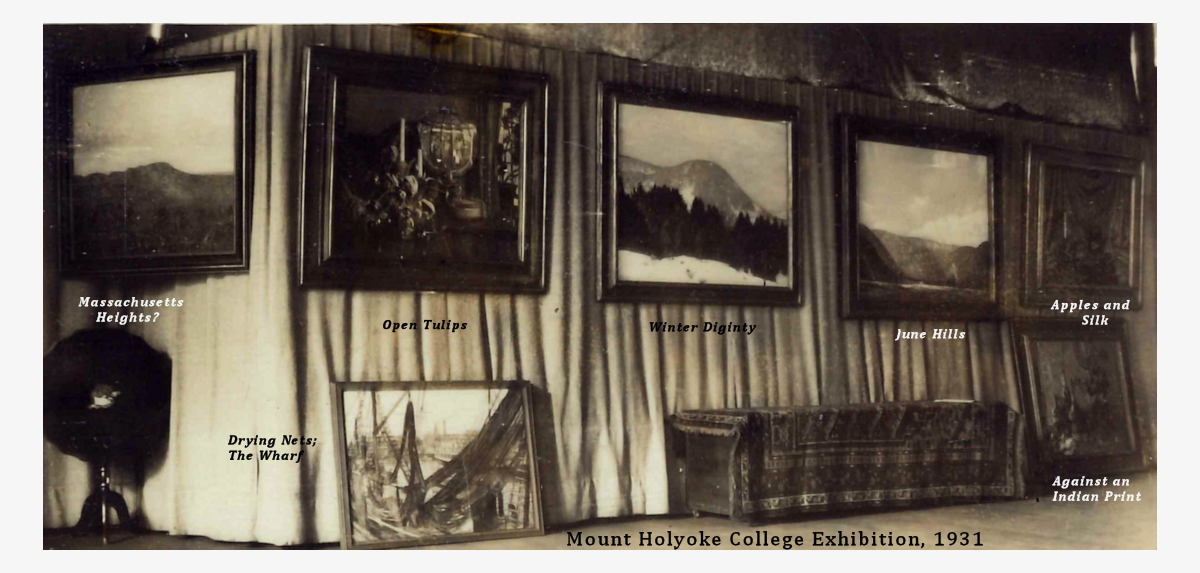

.png)

